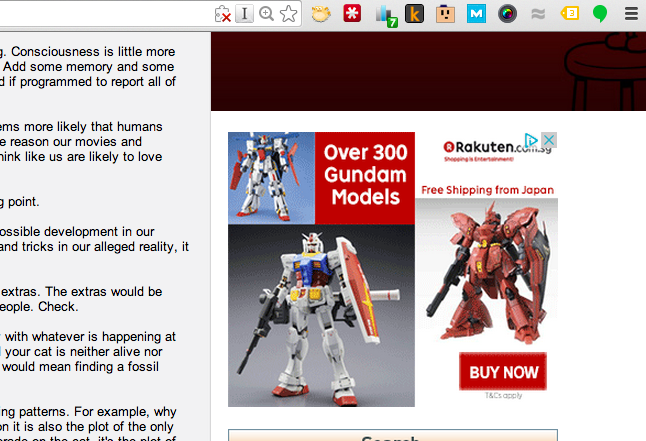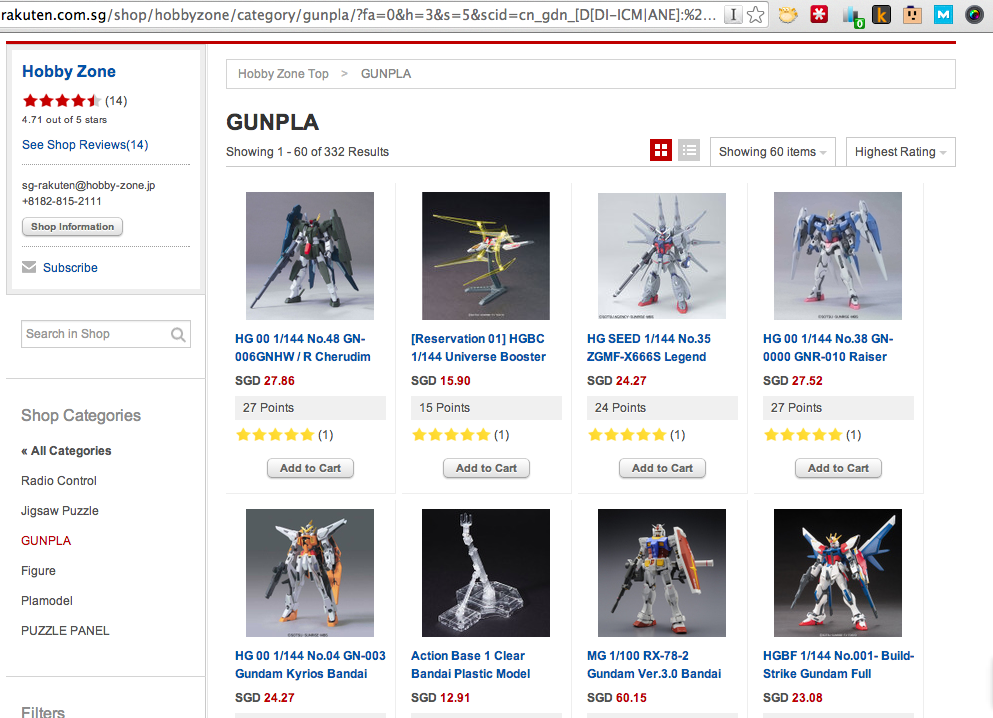
Today's post is inspired by this Rakuten ad from March this year. Rakuten Ichiba is Japan's largest e-commerce site and also ranks as one of the world's e-commerce titans. They made headlines last year when they bought out Singapore startup Viki. They made even bigger headlines this year when they bought messaging app Viber. Since February this year, they have opened an office in Singapore, and are after your (and my) purchasing dollar! How, you might ask! Going back to the ad, I was served the ad for Gundam figurines. I hadn't visited Rakuten before, and was not browsing for any Gundam figurines, so it's probably triggered due to ad targeting through user interests and topics, which can be terribly expensive as this method typically doesn't permit very granular targeting. At best, you can expect to target users based on:
- Age
- Sex
- Interests
- Topics
- Placements - the most granular targeting dimension. You can choose individual Youtube channels, mobile apps, websites etc.
This method of advertising is prohibitively expensive for most. Google's Display Planner suggests a CPM bid of S$1.50. Search campaigns are more targeted than Display campaigns, and I would expect them to yield a higher ROI. The Display Planner itself acknowledges the importance of 'branding' as an objective, and shows you CPM rates if you select it. The answer then, is a clever use of interests and topics to show ads most likely to be relevant to the user. I was shown Gundam ads, and a quick check with friends showed that ads also extended to "fresh food from Japan". Depending on your age, sex, and browsing habits, you could be shown a variety of ads meant to be as unique to you as possible.
A pen and paper calculation yields an estimate that there are 1 million consumers between the age of 25-34 in Singapore. For the sake of smiplification, let's assume that buying ads for Gundam figurines is broadly the same as buying ads for other interests such as apparel, pets, and so on. If we assume that every person sees a Rakuten ad only once per day, that gives us 30 million impressions per month. At a CPM of S$1.5, Rakuten is spending S$45,000 per month. This massive scope of audience reach, and the ability to do some audience targeting, is what persuades companies like P&G to buy ads for skincare and shampoos. Why we didn't see more tech companies exploiting low CPMs before the Nestles and P&Gs of the world bid up prices with their gargantuan budgets is a fascinating question in itself, and which we could explore in a future post.

Back to Rakuten, let's try to figure out how much value they're getting out of the S$45,000 that they're (possibly) spending on Display ads. Let us assume that the ads get a CTR of 0.5%, giving 150,000 visitors (out of 30 million impressions) per month to Rakuten. Let us also assume that a measly 1% (1500 visitors) of these visitors end up making a purchase, earning an average of S$10 per customer for the big R, yielding monthly profit of S$15,000. Whoa! Something looks fishy here. Granted we are using conservative figures for our conversion rates, so Rakuten could be making more money than S$15k, but incurring a S$30k loss on a S$45k display campaign for 'branding' doesn't seem like the sort of thing tight-fisted e-commerce companies do, world giant or not. My guess is that the LTV of a customer is much higher than that first purchase. To break even on their S$45k outlay, Rakuten needs the same 1500 customers who made a purchase to buy 2 more times, which is plausibly achievable.

Anyway, I went ahead and clicked on the Gundam ad. A S$10 profit for Rakuten per sale now seems high, but I noticed that Rakuten offers loyalty points called Super Points. As a visitor, it seems obvious that Rakuten invests heavily in retaining her customers, and spends her marketing dollars very judiciously, going against conventional wisdom that a launch campaign is really just about spreading "awareness", that most meaningless catch-all buzzword, and can be targeted, effective, and most of all, profitable.
That's all for today! Have a terrific Labour Day weekend, and leave your comments below!